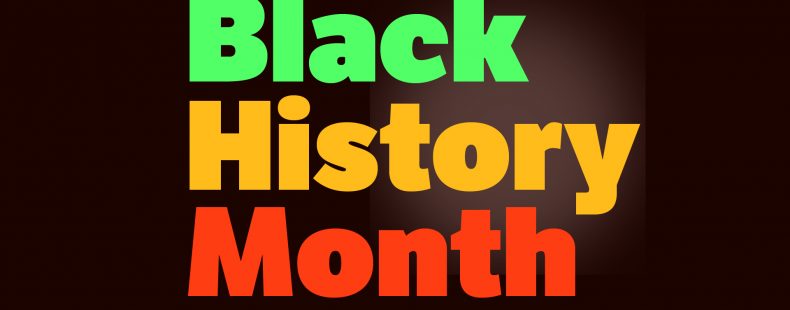Black Lives Matter is a powerful political and social movement aiming to ensure basic human rights for Black people. Many people are familiar with the name of the movement as it is used amid protests against violence inflicted on Black people involving police officers, including the death of George Floyd in 2020. As the movement has expanded all around the world, many may not know that Black Lives Matter began as a hashtag in 2013, used on social media to decry the acquittal in the shooting death of Black teenager Trayvon Martin.
And, Black Lives Matter joins a long tradition of calls to action that activists have helped serve as catalysts for social justice. A catalyst, here, refers to “a person or thing that precipitates an event or change.”
WATCH: Can A Person Be A Catalyst?
Let’s take a look back other influential—and now iconic—rallying cries that have helped catalyze change throughout US history, starting with its very foundation: the American Revolution.
1. Give me liberty or give me death!
It was 1775 in Richmond, Virginia, when politician and lawyer Patrick Henry uttered one of the most famous calls to action in US history. Urging the colonies to revolt, Patrick said:
“Why stand we here idle? What is it that gentlemen wish? What would they have? Is life so dear, or peace so sweet, as to be purchased at the price of chains and slavery? Forbid it, Almighty God! I know not what course others may take; but as for me, give me liberty or give me death!”
That phrase helped spur the revolt and became a catalyst for the freedom of the United States. Powerful stuff.
2. Take it to the streets
One of the oldest and most effective means of public protest is, of course, the march. Take it to the streets has been a way to gather people together in order to help labor movements and civil rights groups to both draw attention to issues and to bring about change. For example, the anti-Vietnam War marches culminated in more than a half a million people converging on the national mall in 1969, which was a record at the time.
The 2017 Women’s March, a response to the election of Donald Trump, stressed the importance of women’s rights, immigration reform, healthcare, and more. It was a march reminiscent of the first group to take the streets in large numbers: the women in the 1913 Women’s Suffrage March. The 2017 march drew a half million women to DC alone. Some 400-plus marches also took place around the states, with over 80 in other countries. An estimated five million people marched worldwide on January 21, and the event is considered the largest one-day protest in US history. Proof that women’s standing power is timeless and unstoppable.
3. Sit-in
Sit-ins are often an effective means of protest, intended to be non-violent. A sit-in brings people to a public space to protest that entity’s policies or bring attention to social injustices, in order to effect change.
Originally launched by union and civil-rights activists to correct injustices, such as segregation, the phrase sit-ins eventually became a standard descriptor of the method of protest that college-campus students used in the ’50s … and they are still used on campuses today. Sit-ins are often used as a call for change to a college’s curriculum, administrative policy, or investments.
Rosa Parks led one of America’s most famous sit-ins in 1955. It should be noted that other Black Americans protested bus segregation in the same manner as early as the 1940s, and that these actions were extremely dangerous during that time. Through the 1960s, civil rights sit-ins often resulted in tragically violent reactions by both law enforcement and citizens. It took real bravery to protest in this way.
4. Love it or leave it!
Conservative America’s response to much of the social change during the 1960s was encapsulated handily in the slogan and bumper sticker directive, “America: Love it Or Leave It!” It was both a protest-era call to action and a response to all that was being protested. And, even though conservatives coined it to try and get people to stop protesting, it actually pushed people into an ultimatum … if they didn’t love it, and didn’t want to leave it, the only thing to do was try to change it.
5. Burn your draft card
As the Vietnam War got underway, the draft, or conscription, became synonymous with the Grim Reaper knocking on your door, all for a somewhat murky cause.
Between 1964 and 1973, the US military drafted 2.2 million American men between the ages of 18 and 26 to fight a war “against communism” in Southeast Asia. Some young men enrolled in college to receive a deferment, some moved to other countries like Canada, and some signed up for the National Guard. Others, who believed in the war or their duty to fight, stepped up and volunteered.
However, many of these men also joined together in protest by burning their draft cards, beginning in 1963, to show their resentment about losing their ability to choose. The action was outlawed in 1965, but few offenders were prosecuted.
6. Burn your bra
Burn your bra! was reportedly the rallying cry of the women’s movement of the 1960s and early ’70s, but the idea may be more of a collective false memory than anything else.
While a trashcan of women’s undergarments burned with some fanfare outside the 1968 Miss America contest in protest of beauty pageant culture, there is little proof that the women’s liberation movement called on women to burn their bras. Many women embraced a bra-free life for a number of reasons through much of the ’70s, but few actually set them on fire.
Nonetheless, the phrase is forever ingrained in our memories and spurred feminists to remove their constraints (physical or not) well into the 21st century.
7. Raise a fist/Black Power
The 1960s were also the time of the Black Panthers and the rise of the Black Power ideology. The phrase Black Power was meant to inspire Black Americans to rise up and take action against the systemic racism of the early 20th century, and it was accompanied by a salute: a raised fist. At a 1968 Summer Olympics medal ceremony in Mexico City, two Black track Olympians controversially raised black glove-clad clenched fists, mirroring the Black Power salute, during the national anthem. (One athlete later said it was a “human rights salute.”)
John Carlos and Tommie Smith, who won bronze and gold medals respectively, raised their fists on the podium in protest of ongoing civil rights injustices in America. The silver medalist was Australian Peter Norman, who supported Carlos and Smith by wearing a badge for the Olympic Project for Human Rights. He suffered widespread condemnation at home for that support.
Nearly 50 years later, the stenciled image of a raised, clenched fist became part of the nascent “resistance” tableaux by those who oppose the presidency of Donald Trump. It first made a widespread appearance at the massive 2017 Women’s Marches after President Trump’s inauguration. The raised fist inarguably has staying power.
8. Occupy/We are the 99%
The Occupy movement sprang out of sit-ins that occurred across the University of California campuses in 2009 and 2010 in response to tuition raises and budget cuts. The banking crash and mortgage crises of the time had done damage to the middle class all around the county, and the response was Occupy movement. Protesters called for banking reforms and focused on the wealthiest 1% of Americans, fighting for the rest of the population who were struggling by using the call to action “We are the 99%!”
Encampments of protesters sprung up in Manhattan (Occupy Wall Street started in September 2011), and soon protests were taking place in more than 80 countries and in over 600 American communities. Shortly after the encampments emptied several months later, discussion of income inequality and minimum wage became front and center in the national dialogue, due largely to the Occupy movement and its accompanying call to action.
9. Black Lives Matter
Let’s discuss Black Lives Matter in greater depth. The phrase Black Lives Matter is many things: a rallying cry, a statement, an organization, a movement. It began in 2013 as a social media hashtag after teenager Trayvon Martin was shot to death by George Zimmerman (who was later acquitted of second-degree murder). Three black women began the hashtag/movement in response to concerns that Black lives were devalued, especially when it comes to police brutality against Black people.
While some Americans responded with “All Lives Matter,” “Trans Lives Matter,” and “Blue Lives Matter” (for law enforcement), the core message about the value of Black lives in the US continues to resonate.
10. Taking a knee
Taking a knee has become a buzz phrase capable of stirring heated conversation. But, the history of taking a knee and its accompanying action started out as something other than what it means today.
Athletes have long used taking a knee as a way of showing a team’s unity when a player is injured during play. In 2016, however, the NFL quarterback Colin Kaepernick became troubled by the deaths of a number of young, unarmed Black men at the hands of police around the country. Kaepernick decided to sit during the national anthem at his team’s (the 49ers) games, when players traditionally stood, to show his concerns about the country. Kaepernick soon began kneeling instead of sitting, after meeting with a former Green Beret who suggested taking a knee as way of continuing to show protest while honoring the military who fight and die for the country. It seemed like taking a knee had transitioned from an expression of team solidarity to one of protest.
Until recently, when nearly all the NFL showed their team unity by banding together as a whole to protest presidential criticisms about players who were taking a knee. Unity and protest join hand-in-hand, or knee-on-knee. Kaepernick hasn’t had NFL work since, but continues to be a prominent activist for civil rights.














